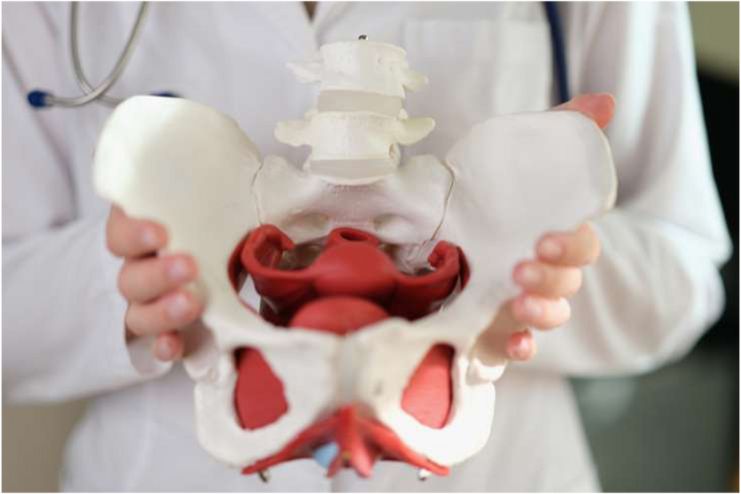Affiliate Disclaimer
Some links in this article are affiliate links. We may earn a small commission if you make a purchase through these links, at no extra cost to you. We only recommend products we find useful to our readersPelvic health, which includes the health and function of pelvic floor muscles and organs in both men and women, is a critical component of total wellness. Understanding the intricacy and significance of pelvic health, often overlooked in everyday medical conversations, helps identify and treat potential problems early.
The pelvis is more than just a physical structure; it is essential for mobility, stability, and mental toughness. Its well-being affects everything from posture and flexibility to intimacy and hormone balance, affecting quality of life.
The article aims to educate you on pelvic health, including its essential elements, common disorders, and efficient treatment choices.
Anatomy and Function
Your core is a collection of muscles that starts with your pelvic floor muscles. Your back, abdomen, pelvic floor, and diaphragm (breathing muscles) are core muscles. These muscles work together to stabilize the middle of your body by attaching to your spine and pelvis.
From the pubic bone in the front of your body to your tailbone (coccyx) in the rear, your pelvic floor muscles extend. The muscles on your pelvis’s right and left sides protrude outward on the ischial tuberosity, or sitting bones. Several pelvic floor muscles intertwine to form a single sheet of layered muscle with openings for the anus, urethra, and vagina.
Life runs smoothly when the pelvic floor is healthy and working well. However, weakened integrity may cause issues like prolapse, pelvic discomfort, or incontinence. Understanding this complex system lets you prioritize maintenance, promoting physical health and a revitalized sense of self-assurance and bodily comfort.
According to Dr. Brooke Gurland, MD, a colorectal surgeon at the Stanford Health Care Pelvic Health Center, “anything which puts pressure on the pelvis, including pregnancy or childbirth, chronic cough, chronic constipation, constant straining while toileting, or nerve damage from surgery or disease, can lead to pelvic floor disorder.”
Related Articles: Pelvic Floor Exercises: Strengthening Solutions for Incontinence
Common Pelvic Health Issues

Despite its resilience, the pelvic area can sometimes face difficulties. Effectively managing common pelvic health issues begins with understanding them.
Urinary Incontinence: Picture having a persistent fear of leaking when you sneeze or laugh. Weak pelvic floor muscles frequently cause urinary incontinence, which is more widespread than commonly believed. The two most common varieties are urge incontinence (a sudden, strong urge to urinate) and stress incontinence (leakage during physical exercise).
Endometriosis: Tissue resembling the uterus lining grows outside the organ in endometriosis. During periods, it may cause discomfort and soreness in the abdomen. Eating well and exercising frequently are crucial for preventing endometriosis. Endometriosis is more likely to occur in women who smoke.
Yeast Infections in the Vagina: Women often suffer from vaginal yeast infections. An overabundance of yeast in the vagina causes burning, itching, and discharge. Maintaining proper hygiene practices, such as cleaning the vaginal area frequently and dressing in loose-fitting clothing, can help avoid vaginal yeast infections.
Pelvic Organ Prolapse: This ailment occurs when the organs in the pelvis droop into the vaginal canal. Menopause, childbirth, and specific medical problems can all cause it. A balanced diet and regular exercise are crucial for preventing pelvic organ prolapse.
Sexual Dysfunction: Physical or emotional issues are frequently the cause of sexual dysfunction, which includes pain, poor desire, or trouble obtaining arousal. Pelvic floor dysfunction, hormone imbalances, or trauma can all play a role. Hormone therapies, pelvic therapy, and psychotherapy are some possible solutions.
Related Articles: Postpartum Pelvic Health: Healing and Recovery After Childbirth
What Leads to Pelvic Floor Issues?
A variety of circumstances can cause these issues. The following are some typical reasons for pelvic floor issues:
- Muscles, ligaments, or pelvic nerves may sustain damage during pregnancy and childbirth.
- Surgery on the abdomen and pelvis can result in a series of issues, including scar tissue that could irritate nerves.
- Additionally, pelvic organs, muscles, and fascia (the connective tissue that surrounds organs and muscles) may experience significant issues as a result of cancer and radiation therapy.
- Changes in hormone levels brought on by natural processes like menopause can lead to issues with tissue elasticity and dryness, which may affect sexual performance.
- Chronic coughing and constipation also put a lot of strain on the pelvic floor, causing high force loads on tissues that may deteriorate with time and lead to hemorrhoids, prolapse, or loss of support for organs with urine leaks.
Dr. Ekene Enemchukwu, MD, MPH, a urologist specializing in pelvic reconstruction surgery at the Stanford Health Care Pelvic Health Center, says, “Although rarely discussed, pelvic floor disorders also affect men.”
Related Articles: Understanding Pelvic Floor Disorders and Pain: Causes, Symptoms, and Treatment Options
Preventive Measures and Maintenance

Maintaining the health of your pelvis is an investment in your general well-being. Taking a few preventative measures ensures that this crucial area stays strong, functional, and pain-free.
Too much weight can strain the pelvic floor muscles, causing weakening and dysfunction. Eating a balanced diet and exercising frequently can help maintain pelvic floor health and control weight.
- Kegel exercises are an easy yet practical approach to maintaining the strength of these muscles. Try to complete three sets of ten repetitions every day. Pilates and yoga can also improve the pelvis’s flexibility and stability.
- Prolonged constipation and straining during bowel motions can strain the pelvic floor muscles. To prevent undue strain, consume enough fiber, drink plenty of water, and have regular bowel habits.
- Maintaining proper cleanliness is crucial to avoiding infections that could jeopardize pelvic health. Choose cleaners with a pH balance instead of harsh soaps. Wear breathable cotton underwear and always wipe from front to back.
- Poor posture strains the muscles and connective tissues, leading to pelvic floor dysfunction. Maintain proper posture, particularly while spending a lot of time sitting down.
Pelvic Floor Dysfunction Treatment
- A pelvic floor physical therapist can offer customized exercises and procedures to strengthen and rehabilitate the pelvic floor muscles. It could involve manual treatment, biofeedback therapy, and therapeutic activities.
- Doctors may occasionally recommend medication to treat symptoms like pelvic discomfort caused by pelvic floor dysfunction or urinary incontinence.
- For those with pelvic floor dysfunction, behavioral therapy, including bowel retraining and bladder training, can help enhance bladder and bowel control.
- In severe cases of pelvic floor dysfunction, doctors may require surgery to reinforce or restore the pelvic floor muscles and treat related conditions like pelvic organ prolapse.
Seeking Professional Help

Consulting a specialist is necessary for pelvic health and signifies empowerment and self-care. Many women keep their discomfort to themselves because they believe it to be “normal” or something they have to put up with.
Routine examinations with a pelvic floor specialist, urologist, or gynecologist are crucial for early detection and treatment. These specialists are qualified to identify root causes and suggest customized fixes, guaranteeing your comfort and standard of living.
You and your healthcare practitioner must communicate openly. Never be afraid to talk about symptoms, no matter how trivial or intimate they may appear. Remember that no topic is off-limits, and no issue is too minor. Your health comes first; taking care of problems now can help you avoid problems later.
Conclusion
Pelvic health is the silent foundation of general well-being. It affects everything from mental self-assurance to physical stability. Realizing its importance can help you start on the path to a better, more powerful life.
Make pelvic health a priority by being informed, taking preventative measures, and getting help from a professional when necessary.
Proactive measures, such as a balanced diet, pelvic floor exercises, and honest communication with medical professionals, can significantly impact health.
References
- https://www.njbestobgyn.com/2024/02/23/pelvic-health-common-issues-and-tips-for-prevention/
- https://upandrunningpt.com/2024/05/13/what-is-pelvic-health-and-why-is-it-important/
- https://my.clevelandclinic.org/health/body/22729-pelvic-floor-muscles
- https://pmc.ncbi.nlm.nih.gov/articles/PMC2617789/
- https://www.physio-pedia.com/Pelvic_Floor_Anatomy
- https://hospital.uillinois.edu/primary-and-specialty-care/pelvic-health/women-pelvic-health-disorders
- https://stanfordhealthcare.org/stanford-health-care-now/2018/how-to-improve-your-pelvic-health.html
- https://my.clevelandclinic.org/health/diseases/14459-pelvic-floor-dysfunction
- https://womancarepc.com/pelvic-floor-health-how-to-prevent-and-treat-pelvic-floor-dysfunction/
- https://www.uclahealth.org/medical-services/womens-pelvic-health/patient-education/pelvic-floor-disorders
- https://www.betterhealth.vic.gov.au/health/conditionsandtreatments/pelvic-floor
- https://www.aurorahealthcare.org/services/womens-health/services-treatments/pelvic-floor-dysfunction
- https://www.advocatehealth.com/health-services/womens-health-center/pelvic-health
- https://www.mayoclinichealthsystem.org/hometown-health/speaking-of-health/addressing-pelvic-health-disorders
In this Article

















